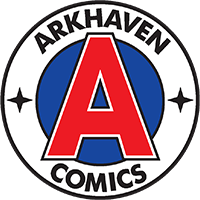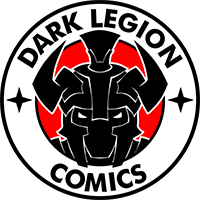RE:View – Ichabod and Mister Toad

Normally I limit REViews to fantasy and science fiction films from the 1980s. But I can make exceptions.
After the massive success of Snow White, Walt Disney had two major bombs, Pinocchio and Fantasia. The Wind in the Willows (a children’s classic from Great Britain,) had been in development but when the Animator’s Strike (AKA the attempted Communist takeover of Disney) started everything was put on hold.
Disney Studios was about to fold, much to the delight of the Communist-run Screenwriter’s Guild. However, Disney was saved by the U.S. Army and WWII. Money came pouring in from a government contract, which kept Walt afloat long enough to go through his studio with a gutting knife. He fired about half of his company.
When Walt finally had a chance to look over the development of the Wind in the Willows, he didn’t like what he saw. He didn’t think it met the standard for a theatrical release. However, quite a bit of money had been put into it and people value the most what costs them the most. Walt decided to go with just one story in the Wind in the Willows, Mister Toad’s Wild Ride. This was to be paired with a pretty good short that was far along in production, The Legend of Sleepy Hollow. These conjoined twins were released as The Adventures of Ichabod and Mister Toad. Each one was prefaced by a narrator from their respective country of origin. The quite British, Basil Rathbone for Mister Toad, and the very American Bing Crosby for the Legend of Sleepy Hollow.
The deference to Great Britain (or any foreign country) was a little unusual for an American company particularly one run by a gruff Mid-Westerner. However, Disney had developed his own special relationship with post-war Britain. Attlee’s government had favored a Tiger Economy, money made in Great Britain had to stay in Great Britain. Which meant that Walt owned a lot of money there that he couldn’t transfer to the US. So he made lemonade of that lemon by starting a cheap production company in Britain. One that had to meet Disney standards. Disney ended up with a very strong relationship with the British film industry that lasted for decades.
As a result, Walt Disney actually did get Mister Toad’s Wild Ride right. There is a very English country feel to it that Americans usually never get right.
The backstory for the Legend of Sleepy Hollow is a bit duller by comparison. Washington Irving blah-blah-blah. Any reader of mine is well-read enough to know everything about that back story. And it doesn’t matter. Gen-Xers were the last generation of kids to be utterly terrified by the ride of the Headless Horseman.
As for the animated production, it too was supposed to be a full-length feature but it ran into a story problem that has always plagued screen adaptations of this Washington Irving property. There just isn’t enough story to make a movie out of it. Consequently, every other production tends to pack a lot of filler into it and it never really works well.

Walt Disney was right to keep the story as close to the essentials as possible. What makes Sleepy Hollow so enjoyable is the subtleties. The film opens with Bing Crosby narrating as a book is selected from a library shelf. Bing mentions a bunch of other American tall tale legends that used to be known to any school child in this country and are undoubtedly illegal at this point.
One interesting thing of note is just how much the general public’s view of these characters has changed with time.
Current view: Ichabod Crane was an intelligent and sensitive nice guy and the hero of the story. Brom Bones was the town bully. Poor Katrina was a romantic object with no real agency of her own and would have been better off with the caring Ichabod than the brutish Brom. Most of the more recent versions of this story, correct the ending so that Brom is disposed of one way or another and Ichabod gets The Girl.
Original view: Brom was the rural county hero. Ichabod was the weakling city slicker and low-grade conman. Katrina…Blooming Katrina as she was called in the story, was a girl in her late teens who rather wanted a bit of attention before she selected her obvious choice of husband (meaning Brom).
“The ease with which Brom cleared the field of rivals both piqued and provoked the fair Katrina. And she often wished some champion would appear and take the field openly against the boisterous Brom.”
She wanted Brom to have to try harder. Call it a shit test or call it a fitness test, it is a part of feminine nature that was openly acknowledged back then.
In the actual story, it’s clear that Ichabod’s motives were more mercenary than romantic. The Disney version muddies these waters a little bit.
What I find interesting is the reason why these perceptions of the story have changed so much. It comes down to the rise of Alpha male resentment and Gamma Male identification with Ichabod Crane. He was never meant to be a hero or ultimately a victim. If he had gotten the girl, this frontier town would have suffered quite a bit with him as their local headman. He would have driven off pretty much everyone that disagreed with him on anything and made Katrina utterly miserable almost immediately.
Yet, in Ichabod, the Gammas recognize one of their own.
Abraham Bones on the other hand is clearly the natural-born enemy of all Gamma Males. The Alpha, the strong good-looking leader of men. And worse, this one was a bit of a practical joker.
It says a lot about where both we and Disney are today that Brom Bones was used as the inspiration for…

BONUS: One of the producers of The Legend of Sleepy Hollow was Walt Disney’s right-hand man Ub Iwerks. While the two were close for most of their lives there had been a temporary falling out in the nineteen-thirties. It was during this period that Iwerks produced his own version of The Legend of Sleepy Hollow.

